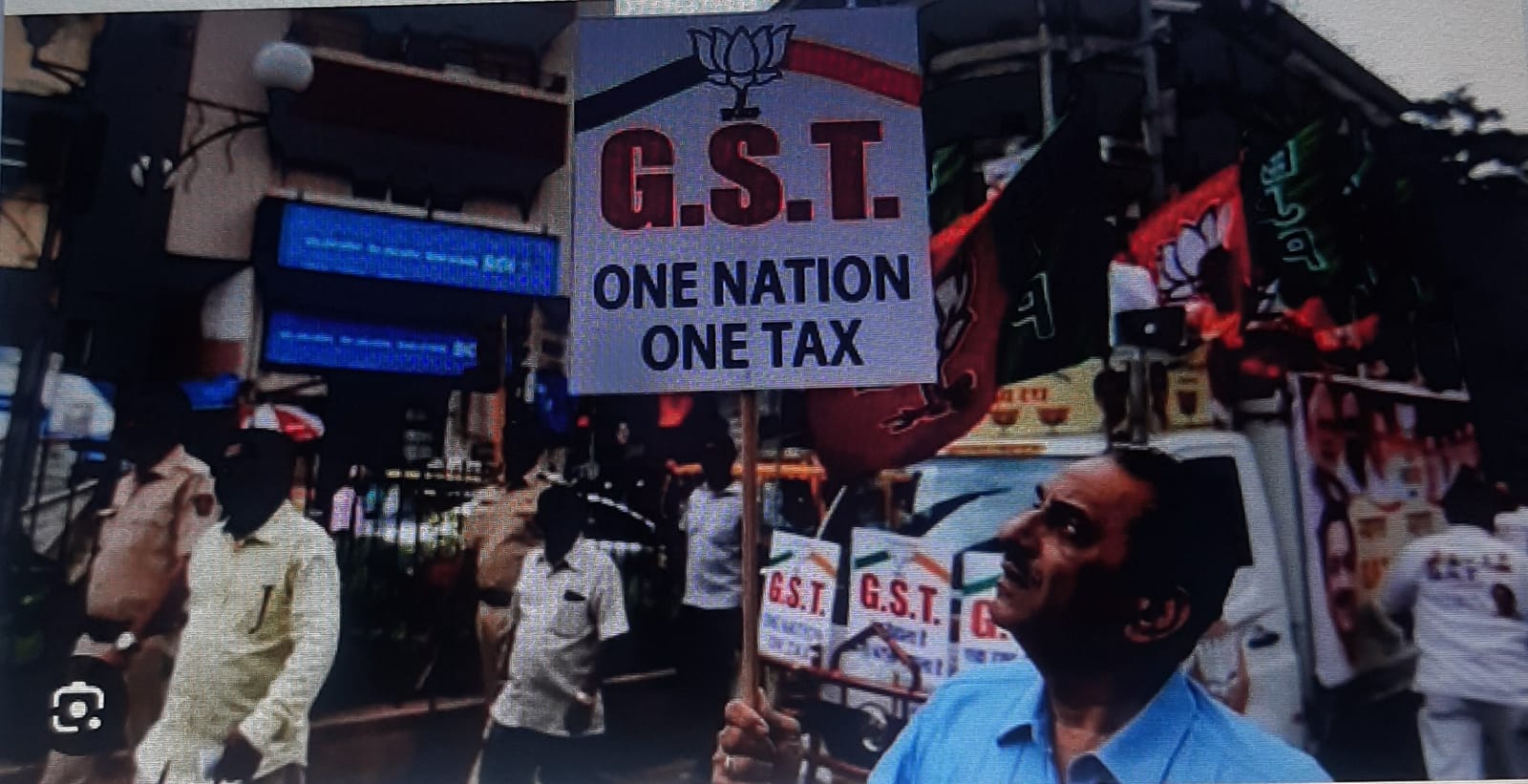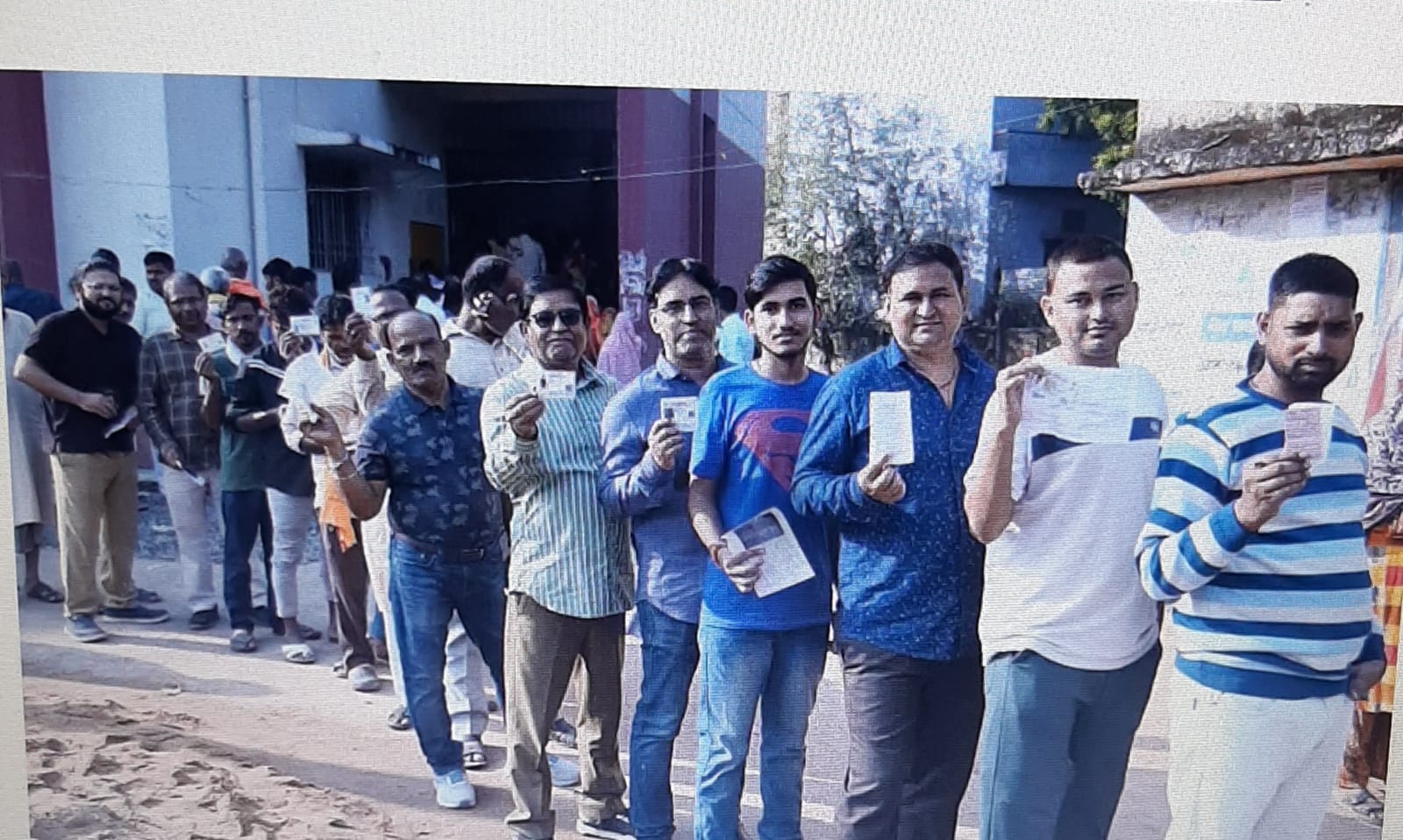
The tax system remains as opaque as ever. At present, it’s only the large manufacturers and big companies who stand to gain. For medium and small enterprises, it has entailed high costs and the returns have not been commensurate. Delay in release of input tax credit adds additional cost on the companies. Retail dealers and customers are adversely impacted by the high and multiple tax structure. Tax officials exploit the design complexity of GST to further their own personal ends. Existing vigilance structures have proved inadequate, writes former IAS officer Sunil Kumar
A couple of days back a news item was prominently published in newspapers[i] regarding gross GST collections crossing Rs.2.36 lakh crore in April 2025. Even after refunds, net GST collection stood at around Rs.2.09 lakh crore showing a year on year increase of over 9 percent.
Another news item published recently[ii] informed that Government of Uttar Pradesh has reportedly lost faith in State GST officials and has now issued a Government Order seeking options from officers of impeccable integrity with ten years of service in other departments for posting in the mobile squads of State GST department.
Earlier in March, one had come across another news item[iii] regarding the suicide of a senior State GST officer in Ghaziabad and a token strike by State GST officers reportedly protesting undue pressure being exerted on them by Government to achieve ‘unrealistic’ tax-collection targets.
These set one thinking. First, is the current back-slapping on GST collection front by Ministry of Finance warranted? Second, what does the events reported from Uttar Pradesh reveal?
First things first. Since 2017 when GST was first introduced, the monthly gross collections were in the range of Rs.90,000 crore. The Rs.1 lakh crore threshold was first crossed in December 2017 and Rs. 2 lakh crore in April 2024. So it is not that there has been any extraordinary growth over the past seven years especially keeping in view that almost all services are now covered under the GST regime. Much of it can also be attributed to inflation. So real growth rate of GST collection at constant prices would reveal much more than these gross collection figures.
Among the few booming sectors in Indian economy are the real estate, construction industry, transport and logistics industry. Any interaction with property brokers, dealers in building construction material and transport operators would quickly reveal the extent of tax evasion. It is mind boggling. One would not be far off the mark if one asserted that only one in ten buyers were inclined to pay the GST in full. For 90 percent buyers, payment of no GST or partial payment of GST was par for the course. Sellers were willing to take the risk of detection and imposition of penalty rather than risk losing a customer. Buyers had no fear of being penalised for tax evasion. Dealers remarked that the very high rate of GST (12% and more) and multiple slabs for different building materials dissuaded buyers from paying GST. They feel that a lower and uniform tax slab of 5% on all building materials would ensure better tax compliance by both buyers and sellers and Government would not be a net loser.
It is not that dealers accept payments only in cash. Payment through cheque/UPI/online payments are all accepted. Obviously, the dealers have worked out ways of hiding the digital trail. This breaks the myth that digital payments would reduce tax evasion.
Experts believe that high and complex tax rate slabs are not conducive to efficient tax collection system. In fact they foster an ecosystem wherein majority of stakeholders – buyer and seller – have little or no stake in paying taxes. They have high stake in evading taxes.
Tax officials also in such a situation tend to play along and collect only that much which would keep everyone happy – the buyer, the seller and even the Government. Through years of experience, they have realized that a 10 percent growth in tax collection (just a little above the inflation rate) is enough to keep everyone happy. Finance Department may set a tax collection target of say 15% over the actual collection of last fiscal year but is actually happy if 10 percent growth is achieved.
Likewise tax officials try their best to be somewhere near their individual tax collection targets (in the range of 90 to 100 percent) so that they cannot be penalised for failure. This ensures their jobs are safe. Failure in achieving targets can always be attributed to ‘market conditions’ over which they have no control. More often than not, their performance is more with an eye on the future than the present. They know that if they exceed the target, it will again be fixed ten percent higher and that would impose pressure on them the next year. So their strategy is to do just enough to safeguard their jobs. As for promotion and postings, they know how to be in the good books of the Minister.
Senior officers of the department who have to routinely face their Minister and the Chief Minister also need to keep showing that they are ‘taking’ steps to increase tax revenue. And then they keep coming with hair-brained schemes like taking officers from other departments on deputation for posting in mobile squads (so called ‘prize’ postings) even when they know it is doomed to fail. Trust me, it would take these newcomers a minimum of three to six months before they begin to understand the e-way bills they are supposed to check. And finding officers with impeccable integrity is like searching for a needle in a haystack!
Let me give you some history. In the Sales Tax regime, tax was paid only at the point of sale. So it was relatively easy to evade tax. In the Value Added Tax regime, tax was levied at multiple points in the process from production to eventual sale to consumer. A process of input tax credit was brought in where tax already paid was refunded to the dealer so that there was no tax on tax and the consumer did not bear the burden of high tax. GST has taken this system forward by having one tax regime in the entire country instead of multiple State specific VAT rates.
While this has provided some ease to the stakeholders (especially large companies with footprint in several states), existence of multiple tax slabs, frequent change in list of items placed in different tax slabs has not really facilitated tax compliance. Mobile squads were there in the Sales Tax regime and continue to be present in the GST regime. Their presence puts a big question mark over the efficacy of the digital ‘tracing and tracking’ system put in place at a huge cost. The high threshold keep almost 90 percent of businesses outside the formal GST system. Compliance cost under GST remain high and cumbersome and beyond the means of small business. The tax system remains beyond the understanding of principal stakeholders – sellers and buyers. A class of intermediaries: tax lawyers, chartered accountants, company secretaries and new class of digital professionals (proficient in using the GST portal and filing numerous returns) – alone understand and operate the system. The tax system remains as opaque as ever. At present, it’s only the large manufacturers and big companies who stand to gain. For medium and small enterprises, it has entailed high costs and the returns have not been commensurate. Delay in release of input tax credit adds additional cost on the companies. Retail dealers and customers are adversely impacted by the high and multiple tax structure. Tax officials exploit the design complexity of GST to further their own personal ends. Existing vigilance structures have proved inadequate.
The net result is that more things change, the more they remain the same. Discretionary power of tax officials has not really been reduced. Despite talks of establishing ‘faceless’ tax collection system, it remains a far dream. Corruption among tax officials has grown and there has been little or no change in the tax compliance framework.
The solution suggests itself. First, introduce a single rate slab for all goods except the ‘sin’ goods. Second, virtually eliminate all exceptions by bringing almost everyone in the tax net. All provisions of excluding businesses below a specified turnover or having provisions of compounding should be removed. Third, reduce the compliance burden on sellers / dealers by simplifying the returns to be filed. Fourth, change the profile of tax department from that of ‘enforcement’ to ‘facilitation’. Officers should be judged on how they help businesses (especially small and micro enterprises) outside the tax net to become a part and benefit from the system. Fifth, ensure the cost of non-compliance is ‘high’ and ‘certain’ for all defaulters. It is not the quantum of penalty but the certainty of getting caught which acts as a deterrent on the tax evaders. Sixth, place a premium on developing professionalism and establishing a rule based system whether it is in tax enforcement or managing the tax department.
It is only through a system based on trust (of both the taxpayer and the tax collector) that a robust, dynamic and transparent tax system can be put in place. Government may consider paying a fee to all those who collect the tax on behalf of the government from the customer, especially the small and micro enterprises. This would increase their stake in the success of the system. The process needs to be simplified. Existing intermediaries (tax lawyers, CAs,CSs) will raise a hue and cry but the businesses and customers would welcome the change.
Buoyancy in tax revenue through a single rate simplified GST and improved compliance would more than offset the ‘revenue loss’. Time to break free from the ‘business as usual’ mindset and reduce tax evasion is now. A system built on trust would ensure that each citizen becomes an honest taxpayer. That would be cause for celebration.
(Sunil Kumar is a visiting faculty in Gokhale Institute of Politics and Economics and a member of Pune International Centre. He is also a former civil servant. Views expressed are personal.)
[i] GST collections in April hit all-time high of ₹2.36 lakh crore- Refund of export GST rose over 86% while growth in domestic refund was over 22% – Shishir Sinha, The Hindu Business Line, May 01,2025; ttps://www.thehindubusinessline.com/economy/gst-collections-in-april-hit-all-time-high-of-236-lakh-crore/article69521282.ece
[ii] Hindustan, Delhi-Noida edition, May 2,2025; UP Tax Dept Opens Applications For Assistant Commissioner And State Tax Officer In Mobile Squad- By Kamakshi Bishnoi, Published: Fri, 25 Apr 2025; Source:JND; https://english.jagran.com/uttar-pradesh/up-tax-dept-opens-applications-for-assistant-commissioner-and-state-tax-officer-in-mobile-squad-check-eligibility-and-criteria-10232857
[iii] https://www.livehindustan.com/uttar-pradesh/kanpur/story-gst-officials-protest-in-kanpur-against-pressure-from-secretary-over-slpi-02-201741714247629.html









